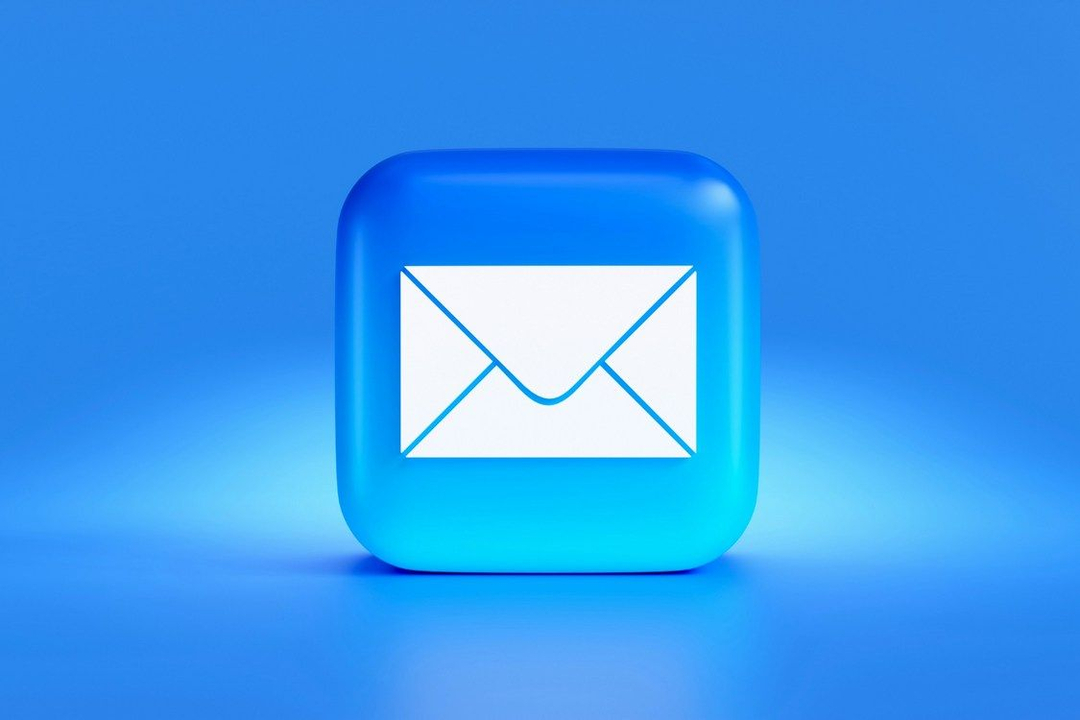Cold Email Meaning: A Complete Guide to What It Is and How It’s Used
by Maildoso's team
05/28/2025
difficulty level ⭐⭐
Cold emailing remains one of the most common ways to reach out to people who don’t know you yet, usually in a professional context. Despite its simplicity, many people still confuse cold emails with spam or email marketing. This guide explains what cold email really means, how it works, how it differs from other email types, and when it’s used in business.
Contents
- What Is a Cold Email?
- How Cold Emails Differ from Other Email Types
- Is Cold Email Legal?
- What Cold Emails Are Used For
- Benefits of Cold Emailing
- Risks and Limitations
- Anatomy of an Effective Cold Email
- Best Practices to Stay Compliant and Effective
- Tools That Support Cold Email Outreach
What Is a Cold Email?
A cold email is an unsolicited email sent to a person or business contact with whom the sender has had no prior interaction. Its purpose is to start a professional conversation, not to broadcast to a mass audience. This might involve introducing a product, offering a service, proposing a collaboration, or requesting a meeting.
It is essentially the digital equivalent of a cold call, except it’s written, not spoken, and gives the recipient more time to consider the message.
Key Traits of a Cold Email
- No prior relationship: The recipient has not interacted with the sender before.
- Direct outreach: Sent from one person to another, rather than as a mass newsletter.
- Business-driven intent: Often used for sales, partnerships, hiring, or networking.
- Legally compliant: Must follow email regulations in the sender’s and recipient’s jurisdiction.
How Cold Emails Differ from Other Email Types
Cold emails are often lumped in with spam or email marketing, but these are distinct formats with different goals and methods.
Cold Email vs. Spam
Spam usually refers to unsolicited, bulk messages that lack personalization and are often irrelevant or misleading. Cold emails, when written properly, aim to be targeted, relevant, and respectful of user consent.
Is Cold Email Legal?
Cold emailing is legal in many countries, but it’s not a free-for-all. The rules vary depending on where the sender and recipient are located, and failing to follow them can lead to penalties or email deliverability issues. Understanding the legal framework in your region, and in your recipient’s, is critical before launching a campaign.
United States – CAN-SPAM Act
In the U.S., cold emailing is allowed under the CAN-SPAM Act. However, there are specific requirements that must be followed. Senders need to clearly identify themselves, use accurate subject lines, and give recipients a simple way to opt out of future emails. Even though prior consent isn’t required, transparency and honesty are non-negotiable under this regulation.
European Union – GDPR
The rules are stricter in the EU under the General Data Protection Regulation (GDPR). For B2C outreach under GDPR, prior consent is typically required before sending marketing emails. For B2B emails, there’s a potential exception if the outreach falls under “legitimate interest,” but this still requires careful consideration and documentation. Businesses must be able to justify their outreach and show that it aligns with the recipient’s professional role or interest.
Canada – CASL
Canada’s Anti-Spam Legislation (CASL) is among the most restrictive. CASL requires express consent for most cases. Implied consent is allowed only in specific contexts, such as existing business relationships or inquiries within the past 6 months. Violating CASL can lead to substantial fines, so businesses need to tread carefully and keep records of how they gathered consent.
Always review the legal environment relevant to your audience before starting a campaign.
What Cold Emails Are Used For
Cold emails serve different functions depending on business needs. They’re not just for sales, they can support communication across roles and industries.
- B2B Lead Generation: One of the most common use cases. Businesses use cold email to reach decision-makers in other organizations, offering products or services directly.
- Hiring and Recruitment: Recruiters often send cold emails to professionals who haven’t applied but match the job criteria. It’s especially common in competitive industries.
- Freelancing and Consulting: Freelancers may pitch their services to potential clients by researching companies and reaching out to key contacts.
- Networking and Thought Leadership: Cold emails can also be used to start conversations with industry peers, invite people to events, or build long-term partnerships.
- Link Building and PR: Marketers send cold emails to websites or journalists to request backlinks, guest post opportunities, or media coverage.
Benefits of Cold Emailing
Cold emailing remains one of the most accessible and flexible outreach methods available to professionals and businesses. One of its core advantages is cost-efficiency. Unlike paid ads or live events that often require significant investment, sending emails has minimal upfront costs. This makes it especially attractive for startups, freelancers, and small teams working with limited budgets.
Another key benefit is scalability. Once the proper infrastructure is in place, such as validated email domains, warmed-up inboxes, and a segmented lead list, it’s possible to reach thousands of prospects in a short period of time. Tools that support automation and personalization make this process even more efficient, allowing for high-volume outreach without sacrificing quality
Cold emailing is also highly measurable. Senders can track detailed performance metrics like open rates, click-through rates, replies, and bounce rates. These insights help refine the messaging and approach over time, making it easier to improve outcomes with each campaign.
Finally, cold email gives full control over how and when messages are delivered. Unlike social media platforms or third-party ad networks, email allows the sender to choose the timing, the tone, and the exact audience. This direct channel means fewer barriers between you and the person you want to reach.
Risks and Limitations
Despite its many strengths, cold emailing is not without challenges. One of the most common issues is low initial engagement. Since the recipient has no prior connection to the sender, it's not unusual for the message to be ignored, especially if the subject line or content fails to capture interest quickly.
Deliverability is another major concern. Without the proper technical setup, including authenticated domains and a warm-up process, emails may end up in spam folders or be blocked entirely. Even well-crafted emails can go unseen if spam filters flag them due to poor sending practices or high complaint rates.
Compliance with legal frameworks also adds complexity. Regulations like GDPR, CAN-SPAM, and CASL require a good understanding of when and how it’s acceptable to contact someone. Following these laws isn’t just about avoiding penalties, it also plays a role in protecting sender reputation and building trust with recipients.
Lastly, there's a reputational risk involved. Sending poorly written, irrelevant, or overly aggressive cold emails can damage both the sender's credibility and the domain’s standing with email service providers. If too many recipients mark the messages as spam, it becomes harder to reach anyone at all, even with improved campaigns later on.
Cold emailing can be a powerful tool, but its success depends on preparation, thoughtful execution, and ongoing refinement.
Anatomy of an Effective Cold Email
Every cold email has a few key components. Here’s how to structure one that gets attention without sounding intrusive.
1. Subject Line
- Keep it short (5 to 8 words)
- Avoid spam triggers (no all caps or misleading phrases)
- Try referencing the recipient’s name or business
2. Opening Line
- Introduce yourself briefly
- Show that the message is not generic - mention something relevant to them
3. Value Proposition
- What are you offering?
- How is it relevant to their role, company, or goals?
4. Call to Action (CTA)
- Keep it simple and specific (e.g. “Open to a short call next week?”)
- Avoid pushing for immediate commitments
5. Signature
- Include your full name, title, and company
- Include a clear unsubscribe mechanism, especially if sending messages to recipients in regions like the US, Canada, or EU.
Best Practices to Stay Compliant and Effective
To ensure success, follow these principles:
- Verify all email addresses before sending
- Keep emails under 150 words
- Send follow-ups (2 to 4 is a common range)
- Avoid links and attachments in the first message
- Use multiple sender addresses to reduce risk
- Include an opt-out option to show transparency
Tools That Support Cold Email Outreach
Running cold email campaigns at scale requires more than just writing messages and hitting send. Deliverability, automation, and infrastructure play a major role in ensuring your outreach efforts actually reach real inboxes. Several platforms help streamline this process by offering features like mailbox creation, personalization tools, campaign automation, and reply tracking.
Maildoso: Scalable Cold Email Infrastructure for B2B Teams
At Maildoso, we provide cold email infrastructure designed specifically for B2B teams. Our system allows you to set up hundreds of mailboxes in just a few clicks, all pre-configured for cold outreach. There’s no need to manually buy domains, create mailboxes, or set up DNS records like SPF, DKIM, and MX. We handle all of that out of the box. You can scale your outbound campaigns by registering 250 domains and deploying 1,000 ready-to-send mailboxes in under 10 minutes.
Our AI warm-up process doesn’t rely on IMAP, which means it uses in-browser activity to simulate real human behavior. Each mailbox is warmed up with up to 100 simulated in-browser actions per day, including sending emails. We also provide automatic IP rotation, if an IP runs into a problem, it’s replaced instantly to maintain consistent deliverability.
We include domains with each mailbox. If you cancel your subscription, you retain ownership of the domains - they are not leased. Our system includes domain forwarding, master inbox capabilities, and optional campaign audits. Pricing starts at $1.4 per mailbox per month with an annual plan.
Other Notable Tools
Saleshandy
Saleshandy offers cold email automation with AI-powered personalization and built-in deliverability features. It supports custom sequences, sender rotation, and detailed performance tracking, making it suitable for both small teams and enterprise users.
Smartlead
Smartlead is focused on high-volume outreach. It provides features like IP rotation, inbox scaling, and auto warm-up, which help prevent deliverability issues during large campaigns.
Woodpecker
Woodpecker specializes in drip campaigns with conditional follow-ups. It detects replies automatically and adjusts the sequence based on engagement, which reduces manual work in outbound communication.
Conclusion
Cold emailing is one of the most practical ways to start a professional conversation with someone who hasn’t interacted with your business before. While often misunderstood or compared to spam or email marketing, cold emails serve a very different purpose, to create a personalized, targeted connection. Whether the goal is lead generation, hiring, partnerships, or networking, cold email allows teams to reach out directly and efficiently.
That said, success with cold emailing doesn’t come from guesswork. It requires the right setup, clear messaging, legal compliance, and ongoing effort to improve results. For anyone looking to build business relationships or expand their reach, understanding how cold email works, and how to do it properly, is a valuable skill in today’s digital-first environment.
FAQ
Double your outbound sales with Maildoso!
We provide the infrastructure for cold outreach with the highest possible deliverability. Forget about the spam folder—set up hundreds of mailboxes in just 10 minutes, starting at only $1.80/month!
You might also be interested
Best Cold Email Software for Smarter Outreach
Explore the best cold email software to send smarter campaigns, reach more prospects, and improve your outbound results without hitting spam.
difficulty level: ⭐⭐
How to Choose the Best Cold Email Platform for B2B Outreach
Explore the best cold email platform options for managing domains, mailboxes, and deliverability in B2B outreach.
difficulty level: ⭐⭐
Best Cold Email Outreach Software for B2B Campaigns
A practical guide to the best cold email outreach software for managing campaigns, improving deliverability, and scaling B2B outreach.
difficulty level: ⭐⭐
BacklinkSwappers, inc.
1390 Market Street Suite 200 San Francisco, CA 94102






